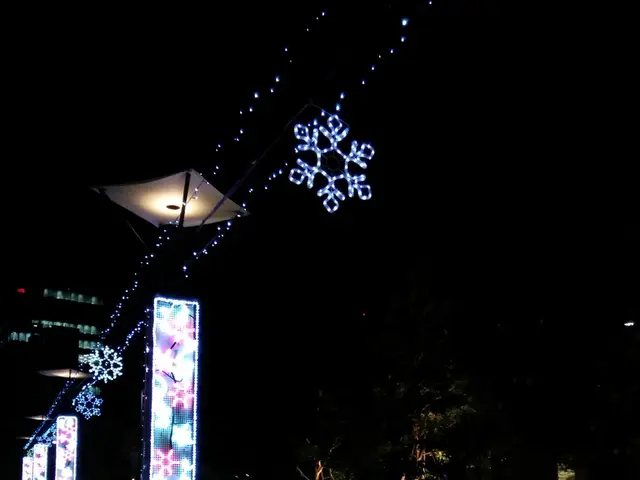Modern Artistic Expressions Through Unconventional Substances
In the ever-evolving world of contemporary art, a new movement is emerging, one that emphasizes sustainability and environmental awareness. Artists are turning to innovative materials to create captivating works that not only challenge traditional notions of art-making but also provoke meaningful conversations about pressing social, environmental, scientific, and technological issues.
One such artist is Jane Perkins, whose masterpieces reimagine famous paintings like Gustav Klimt's "The Kiss" and Vermeer's "Girl with a Pearl Earring" using found objects such as toys, shells, and buttons. By transforming rubbish into intricate artworks, Perkins highlights the importance of recycling and environmental awareness.
Another example of this innovative approach can be seen in the work of artists who use crushed glass to create sparkling mosaics, sculptures, and decorative jewelry. These colorful glass mosaic tables and sculptures, with their distinctive reflective quality, promote recycling creativity.
Svea Tisell's woven chair, made from 2,500 meters of reclaimed shoelaces, is another testament to the meticulous upcycling craftsmanship that is becoming increasingly prevalent in contemporary art.
These examples represent a range of approaches, from fine art to functional art furniture, using recycled plastics, fabric waste, shoelaces, crushed glass, and found objects to create pieces with both aesthetic and ecological significance.
Innovative materials in contemporary art extend beyond these traditional mediums. Artists are now experimenting with 3D printing, bio-materials such as living organisms and bacteria, virtual reality technology, and unconventional mediums such as light and sound.
This collaboration between artists, scientists, engineers, and industry professionals is blurring the boundaries between art, science, and technology, creating works that are visually stunning and intellectually stimulating.
The use of innovative materials in contemporary art invites viewers to consider the impact of science on their lives and the ways it can be harnessed for artistic expression. It also demonstrates that it is possible to create beautiful and impactful works without compromising the health of the planet or sacrificing artistic integrity.
By using innovative materials, contemporary artists are setting an example for others in the art world and inspiring a broader shift towards ethical consumption and production practices. They are creating works that captivate audiences and provoke meaningful conversations about the future of our planet.
In a world where sustainability and environmental awareness are more important than ever, the use of innovative materials in contemporary art is a beacon of hope, a testament to the power of creativity and the human spirit.
Financiers and industrialists are finding new opportunities in the contemporary art scene, as the movement towards sustainability and innovation presents a growing market for eco-friendly materials. This collaboration between artistic creators and businesses is contributing to the growth of a more sustainable economy.
The emerging trend of using cutting-edge materials like 3D printing, bio-materials, virtual reality, and unconventional mediums in contemporary art is also pushing the boundaries of traditional finance, as these materials require funding for research and development, opening a new avenue for investment in the art world.




